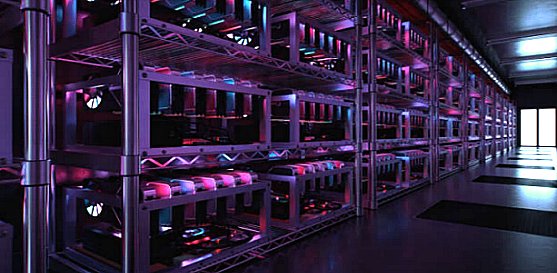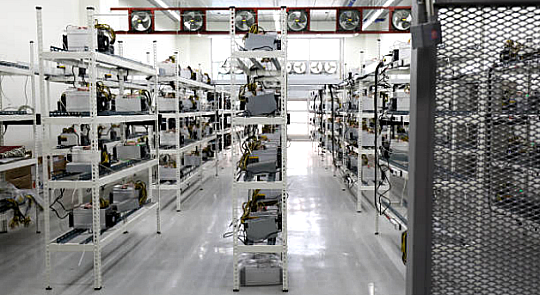Accredited InvestorsAltcoinAnatoli UnitskyAnti-Money Laundering (AML) In CryptoAPIArbitrageArtCoin TokenArticle DirectoryASICAuction Terminology GlossaryBasics of Stock Market InvestingBear MarketBest Crypto Payment Provider In the WorldBitcoinBlockchainBlockchain ConfirmationBlockchain Consensus MechanismBlockchain ForkBlockchain GlossaryBored Ape Yacht ClubBuild a Business That OutperformsBull MarketBuying SkyWay SharesByzantine Fault Tolerance (BFT) ExplainedCasascius CoinCentral Bank Digital Currency (CBDC)Centralized Crypto ExchangeCoinCoinsetCold WalletCollateralCommodity Futures Trading Commission (CFTC)Cross-Chain TechnologyCRUCrypto ExchangeCrypto GlossaryCrypto JokesCrypto Terms to KnowCrypto TickerCryptocurrencyCryptographyCryptojackingCryptounit BlockchainCryptounit GlossaryCryptounit ProgramdApp (Decentralized Application)Dead CoinDecentralized Exchange (DEX)Decentralized Finance (DeFi)Difference Between Bitcoin and EthereumDifferent Ways of Investing MoneyDigital CurrencyDistributed LedgerDo Your Own Research (DYOR)Dollar Cost Averaging (DCA)Dow Jones Industrial Average (DJIA)EncryptionERC-20ERC-721EthereumEvoScentFear Of Missing Out (FOMO)Fear, Uncertainty and Doubt (FUD)Fiat MoneyFNT Fintech CompanyGenesis BlockGlobal Unit PayGlossary of Banking TermsGlossary of Business TermsGlossary of Financial TermsHalvingHODLHot WalletHow Do I Start InvestingHow Rich is Satoshi Nakamoto?How to Create a BlockchainHow to Find Private InvestorsHow to Get Into FintechHow to Program Smart ContractsI Am Thrilled to Be a Part of This Global ProjectInitial Coin Offering (ICO)Initial Public Offering (IPO)Initial Token Offering (ITO)Innovation Basalt TechnologyInnovative Transportation TechnologiesInternational Bank Account Number (IBAN)Investing in Gold Mining StocksInvesting in Gold MiningJagerJoy of Missing Out (JOMO)Know Your Customer (KYC)LedgerLiquidity in CryptocurrencyMaker and Taker Fees in Crypto TradingMarket Capitalization (Market Cap)Meme CoinMetal Credit CardMetaMaskMillenials Now Have Access to Generational WealthMy Best Investment EverNew Digital EvolutionNFT GlossaryOff-Chain TransactionsOn-Chain TransactionsOpen Edition NFTPeer-to-Peer (P2P)Personal Loan GlossaryProbably the Best STO on the MarketProof of Stake (PoS)Real Estate Glossary of TermsReal Estate Investing GlossaryRebase TokenSecurities and Exchange Commission (SEC)Security Token ExchangesSecurity Token Offering (STO)Soulbound Decentralized Identities for Security TokensSoulbound ID Launch by Stobox Proves a SuccessSoulbound TokensStoboxStock Market GlossaryTestimonialsTether Platform and Token (USDT)UnitEx ExchangeUnitsky String TechnologiesUNTBUSDUValidatorWe Started Investing When We Were 25What are Blue Chip NFT?What are Blue Chip Stocks?What are Crypto Assets?What are Crypto Smart Contracts?What are CryptoPunks NFT?What are Digital Assets?What are Digital Collectibles?What are Gas Fees?What are Gas Wars?What are Hashmasks?What are Non Fungible Tokens?What are Non-Sufficient Funds (NSF)?What are Soulbound Tokens (SBT)?What are Stablecoins in Crypto?What are Transactions Per Second (TPS)?What are Utility NFTs?What are Utility Tokens?What Does Burning Crypto Mean?What Does Diamond Hands Mean?What Does Paper Hands Mean?What Does To The Moon Mean?What Does WAGMI Mean?What Happened to Satoshi Nakamoto?What is a 51% Attack?What is a Baby Boomer?What is a Backlink?What is a Banner?What is a Barcode?What is a Bid-Ask Spread in Crypto?What is a Block in Blockchain?What is a Block Reward?What is a Blockchain Address?What is a Blockchain Node?What is a Blockchain Oracle?What is a Blog?What is a Bond?What is a Bot?What is a Broker?What is a Business Accelerator?What is a Cash Cow?What is a Commercial Bank?What is a Commodity?What is a Con?What is a Credit?What is a Credit Limit?What is a Credit Rating?What is a Crypto Airdrop?What is a Crypto Bridge?What is a Crypto Scam?What is a Crypto Token?What is a Crypto Wallet?What is a Crypto Whale?What is a Crypto Winter?What is a Cryptocurrency Public Ledger?What is a Cryptocurrency Roadmap?What is a DAO?What is a Dark Pool?What is a Day Trader?What is a Dead Cat Bounce?What is a Default?What is a Derivative?What is a Digital Credit Card?What is a Fiscal Quarter?What is a Fungible Token?What is a Governance Token?What is a Grace Period?What is a Hard Fork?What is a Hot Wallet?What is a Hybrid Blockchain?What is a Hybrid PoW/PoS?What is a Joint Account?What is a Market Cap?What is a Merkle Tree in Blockchain?What is a Mining Farm?What is a Nonce? What is a PFP NFT?What is a POS System?What is a Prepaid Card?What is a Private Blockchain?What is a Private Key?What is a Public Blockchain?What is a Public Key?What is a Reserve Currency?What is a Ring Signature?What is a Routing Number?What is a Rug Pull in Crypto?What is a Safe Deposit Box?What is a Satoshi?What is a Security Token?What is a Seed Phrase?What is a Shitcoin?What is a Sidechain?What is a Soft Fork?What is a Spot Market?What is a State Bank?What is a SWIFT Code?What is a Tax Identification Number (TIN)?What is a Time Deposit?What is a Transaction Account?What is a Variable Interest Rate?What is a Virtual Assistant (VA)?What is a Virtual Card?What is a Virtual Currency?What is a Visa Card?What is a Whitelist in Crypto?What is a Whitepaper?What is Accounts Payable (AP)?What is AMA in Crypto?What is Amortization?What is an Accrual?What is an ACH Transfer?What is an Actuary?What is an Addendum?What is an Algorithm?What is an Angel Investor?What is an Annuity?What is an Asset?What is an ATM?What is an Atomic Swap?What is an Audit?What is an Avatar?What is an EIN?What is an Embargo?What is an Entrepreneur?What is an IDO (Initial Dex Offering)?What is an Interest Rate?What is an Internet cookie?What is an Investment Bank?What is an NFT Drop?What is an NFT Floor Price?What is an Ommer Block?What is an Orphan Block?What is an Outstanding Check?What is an Overdraft?What is Artificial Intelligence (AI)?What is B2B (Business-to-Business)?What is B2G (Business-to-Government)?What is Bartering?What is Bitcoin Dominance?What is Bitcoin Pizza Day?What is Blockchain Immutability?What is Blockchain Used For?What is BRICS?What is Business-to-Consumer (B2C)?What is C2C (Customer to Customer)?What is Capitalism?What is Catfishing?What is CFD Trading?What is Check Kiting?What is Cloud Mining?What is Communism?What is Content Marketing?What is Decentralization in Blockchain?What is DeFi in Crypto?What is Delisting?What is Depreciation?What is Digital Marketing?What is Diversification?What is Double Spending?What is Dumb Money?What is Dumping?What is Earnings Per Share (EPS)?What is Economics?What is Email Marketing?What is Equity?What is Etherscan?What is Fintech?What is Foreign currency?What is Forex?What is Fundamental Analysis (FA)?What is GameFi?What is Generative Art NFT?What is Gwei?What is Hard Currency?What is Hash Rate?What is Hashing in Blockchain?What is Inflation?What is Initial Game Offering (IGO)?What is Interest?What is Interest Income?What is Mainnet?What is Mastercard?What is Metaverse in Crypto?What is Mining in Cryptocurrency?What is Minting NFT?What is Mobile Banking?What is Money Laundering?What is NFT Alpha?What is NFT Metadata?What is NFT Rarity?What is NGMI Meaning?What is Nominal Interest Rate?What is Online Banking?What is Open-End Credit?What is OpenSea NFT Marketplace?What is Personal Identification Number (PIN)?What is Play-to-Earn?What is Polygon?What is Proof of Authority (PoA)?What is Proof of Work (PoW)?What is Public Key Cryptography?What is Pump and Dump?What is Quantum Computing?What is Refinancing?What is Retail Banking?What is Ripple?What is Sharding?What is Slippage in Crypto?What is Smart Money?What is Solvency?What is Soulbound ID?What is SSL?What is Staking in Cryptocurrency?What is Technical Analysis (TA)?What is Testnet?What is the Ask Price?What is the Better Business Bureau (BBB)?What is the Bid Price?What is the Dark Web?What is the InterPlanetary File System (IPFS)?What is the Gold Standard?What is the Lightning Network?What is the Prime Rate?What is the Sandbox?What is the Secondary Market?What is the World Bank?What is Tier 1 Capital?What is Tokenomics?What is TRC-20?What is Universal Banking?What is Unspent Transaction Output (UTXO)?What is Usury?What is Volatility in Crypto?What is Wash Trading?What is Web3?What is Whisper?What is XRP?What is Zero-Knowledge Proof (ZKP)?Who is Beeple?Who is Satoshi Nakamoto?Who is Vitalik Buterin?Why Tokenization is a Safe HavenWhy You Should Try Your Hand at Trading
What is a Mining Farm?
- Home
- Crypto Glossary
- What is a Mining Farm?
"Mining" is one of the primary ways to obtain cryptocurrency. It involves using a computer's processing power to solve complex math problems within blocks, giving the miner access to the cryptocurrency within the block.

What is a Mining Farm?
A mining farm is a dedicated space for mining cryptocurrencies, ranging from a basement with multiple ASIC machines to a large warehouse with GPUs (graphics processing units) and ASICs. It requires large power supplies and cooling systems, and often involves multiple operators. Essentially, it's a mining pool with miners housed in one location.
Crypto mining is a computationally demanding task, such as solving a Bitcoin block. To increase profitability, resources are combined through resource pooling. As an example, the Liaoning Province in China houses a massive Bitcoin mining farm that takes up a disused factory floor, yet still only produces a monthly output of less than 1000 BTC.
One of the main benefits of a mining farm is the pooling of resources. Instead of one person trying to solve the problem on their own, multiple computers working together can significantly increase the chances of finding a solution and thus increase profits. This is why many mining farms are run by large corporations, enterprising groups, or even entire countries.
Mining farms provide an efficient and cost-effective solution to this problem by consolidating the resources required for mining. A well-designed mining farm will have the latest hardware, cooling systems, and backup power supplies to ensure maximum efficiency and uptime.
Bitcoin Mining
Bitcoin mining is the process of verifying transactions on the Bitcoin blockchain. It involves adding new blocks to the public ledger, known as the blockchain, by using a computer with internet access and a software program connected to the blockchain.
However, mining Bitcoin can be expensive due to the high electrical consumption of the mining computers and the need for frequent replacements. As a result, starting a mining farm requires significant capital upfront to cover the costs of hardware and maintenance.
Despite these challenges, mining remains a crucial component of the Bitcoin network, as it helps to maintain its integrity and security by verifying transactions. To be successful in mining, you will need to carefully plan your setup, invest in the necessary hardware, and continuously monitor your mining operations to ensure maximum profitability.
Differences Between Mining Farms and Traditional Data Centers
Building structure - Mining farms are typically located in storage facilities or warehouses and have a low degree of dependability. They are vulnerable to extreme weather conditions and operational mistakes, as well as failures in site infrastructure. Cooling systems are usually not redundant, leading to smaller mechanical rooms and more space for mining servers but also higher energy needs.
Servers - Enterprise servers must be able to run multiple applications, whereas mining servers are made for a single purpose: mining. Mining servers can handle extreme temperatures and humidity and consume a lot of electricity, resulting in high heat production. To manage this, some manufacturers have temperature-sensitive controllers that adjust the server's fan speed, voltage, and clock speed. Mining servers also have larger cross-sectional areas to improve airflow and better dissipate heat from their specialized chips.
Cooling - Mining farms can cut energy costs significantly by eliminating or reducing components of cooling systems, such as chillers, cooling towers, pumps, piping, and ductwork. High temperature-tolerant servers also allow for outdoor air cooling without mechanical cooling, making the location of the farm critical. Cooler areas with servers that can handle high temperatures result in better energy efficiency. Some cryptocurrency mining data centers are using liquid immersion cooling, where liquid surrounds the servers, absorbs heat and converts to gas to release it.
Reliability - Mining farms have lower stakes for reliability compared to enterprise data centers. In case a server fails, it can be swiftly replaced, causing a monetary loss, but not as severe as an enterprise data center downtime which affects numerous customers.
Environmental impact considerations - Cryptocurrency mining operations, with their large scale and high energy consumption, have received criticism from governments, media, and the public. Some countries, such as China, Vietnam, Bolivia, Columbia, and Ecuador, have banned the use of Bitcoin for payments.
Can Data Centers Lead to a More Environmentally Friendly Bitcoin?
Bitcoin mining uses 110 TWh of energy annually, equivalent to Sweden's annual energy demand. It results in carbon emissions equal to 1 million transatlantic flights. Most mining is done in China where energy is abundant and cheap, and the use of renewable energy is estimated to be between 39% and 73%. The industry is growing, with 500 MW of capacity expected by 2025, and the network could consume up to 185 TWh and emit 90.2 million metric tons of CO2 in the future. To address sustainability concerns, Bitcoin miners may need to adopt the practices of data centers which reduced energy consumption and increased renewables use.
Related Articles

Bitcoin
The digital currency known as Bitcoin is operated through a distributed computer network. However, in a larger sense, the term "Bitcoin" is frequently used to refer to a number of other concepts.

What is Mining in Cryptocurrency?
Mining is the process through which cryptocurrency transactions are gathered, verified and recorded into a digital ledger known as blockchain. The work done by miners is essential for maintaining...

ASIC
The term ASIC is commonly used in the cryptocurrency sector to refer to the specialized hardware produced and enhanced on a regular basis by firms like...

What is a Blockchain Node?
Simply said, a node is any device that participates in a blockchain network. Nodes are typically computers or servers that perform some function for the network to which they are connected.
- Home
- Crypto Glossary
- What is a Mining Farm?